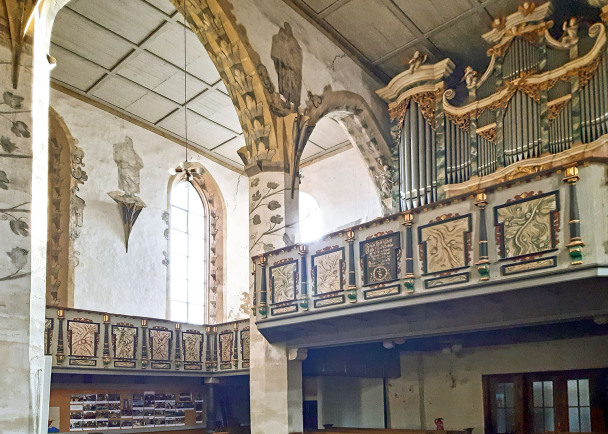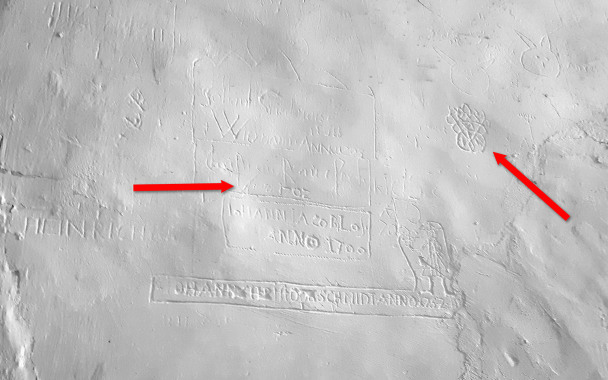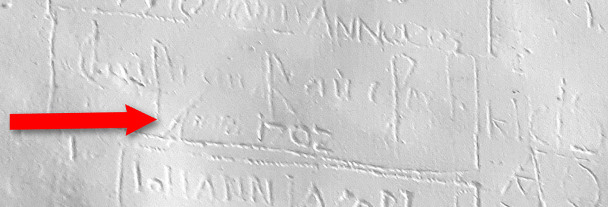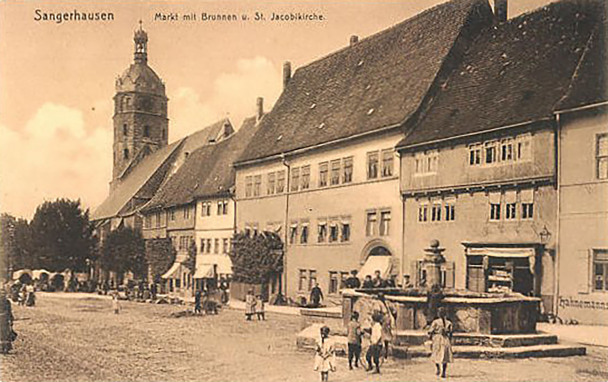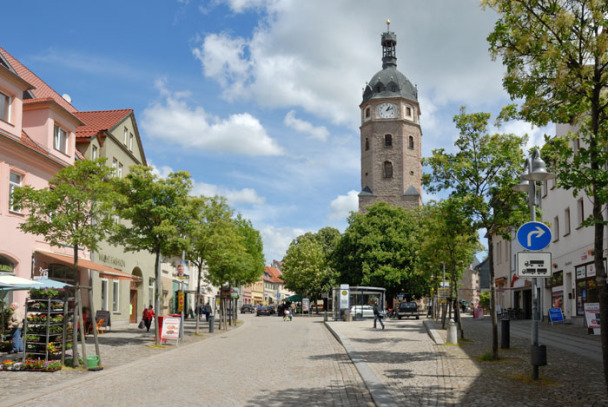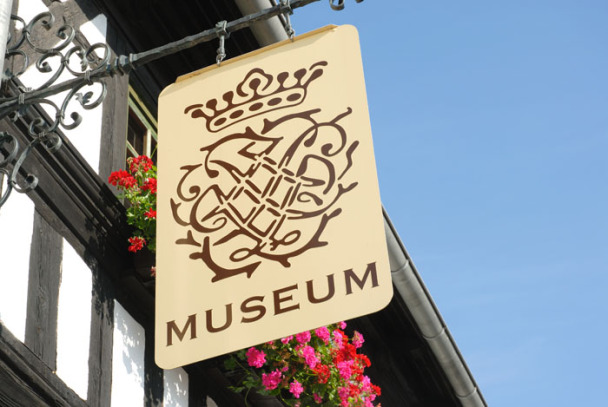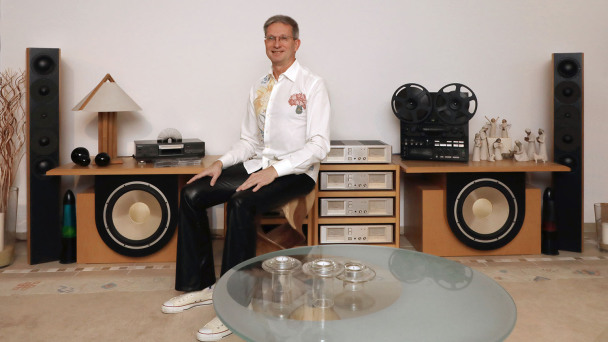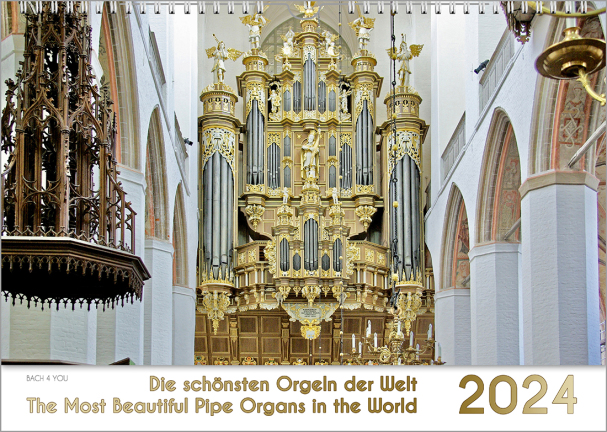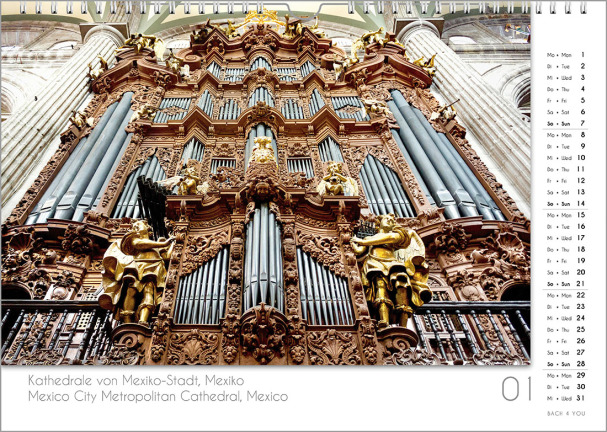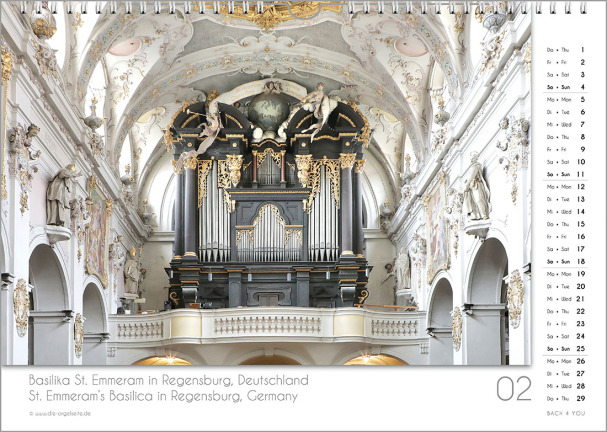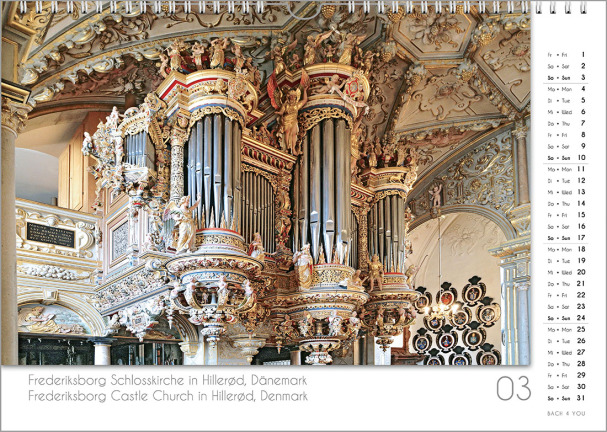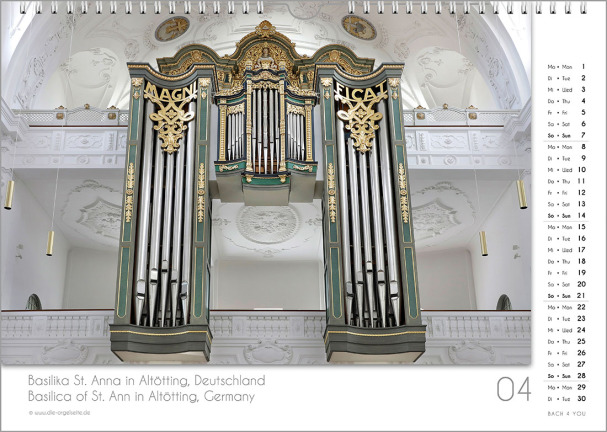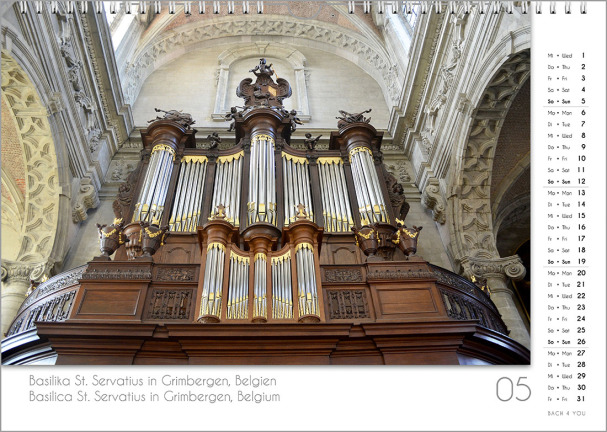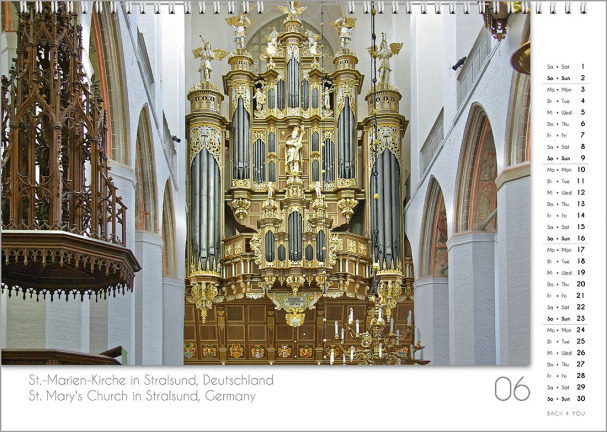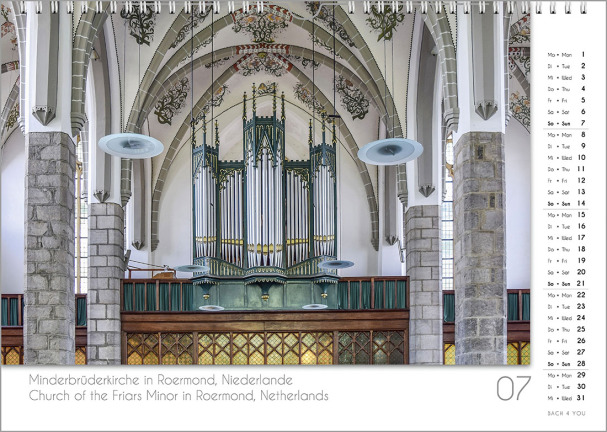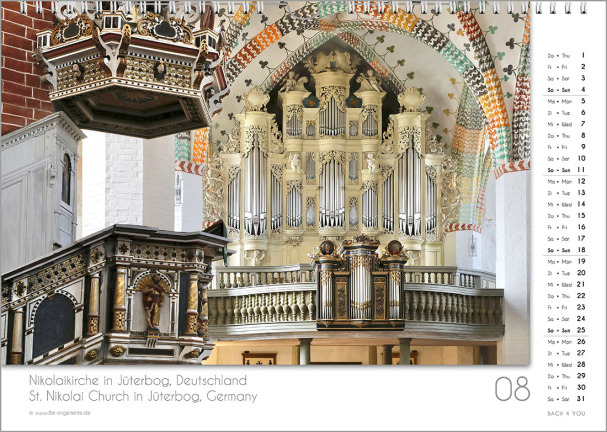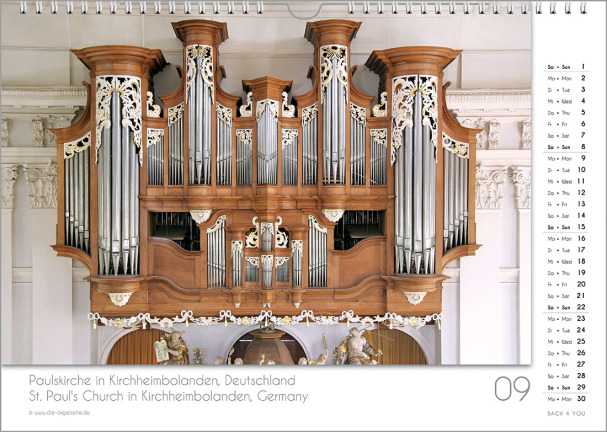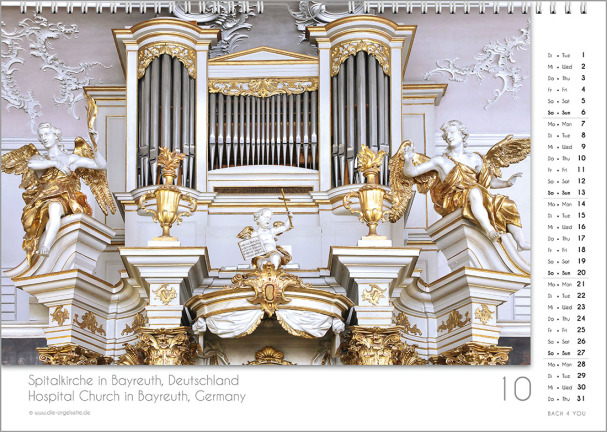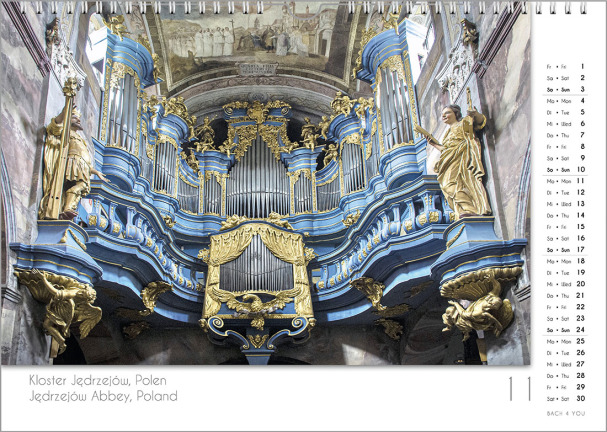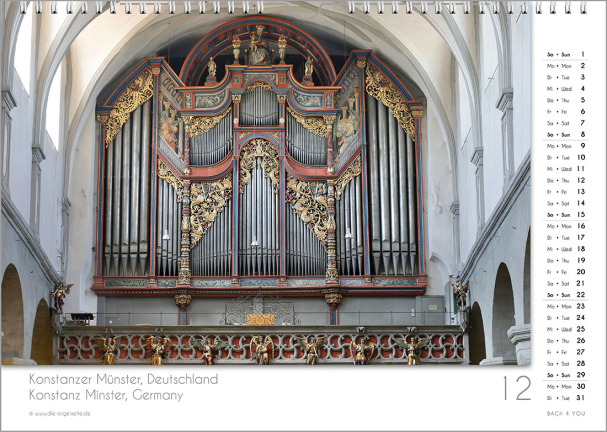
How Does a Pipe Organ Work? And What Is the Coolest Pipe Organ Website on Earth?
Of course, if you create such a Bach website as I did ... or better several websites on the topic of the "Bach Family of Musicians", you will always meet exciting people. They found one of my offers on the internet, and it was fun for them to discover many things. But also I ( ! ) discover such cool people. One of them is a very creative music lover, who is especially enthusiastic about pipe organs, photographs them with a lot of love and also skill simply great and finally created a tremendous website and maintains it continuously. You can find out more about him and his offer below part 1 of this page.
Part 1: So ... How Does a Pipe Organ Work?
Then I am ... and my Bach offer ... is also found by experts or readers, and that is when I have made mistakes. Sometimes it is only the hint to a small spelling mistake which hid from me, but sometimes it is also a real "lapse", like the one when I wrote at that time that Martin Luther was born in Eisenach. And then there is another "league" of Bach fans. These Bach fans equip me with additional exciting knowledge. For example, the night watchman of the city of Laa on the Thaya in Austria (... of course, today he only guides tourists through his beautiful little hometown in the north of Austria). He got in touch with me. He responded to my request to get in touch if someone could contribute something important to the Genealogy of the Bach Family. And it was a sensation for Renate and me and for a tiny number of people interested in the Bach Genealogy, when Michael Lehner from Laa on the Thaya sent me a mail.
Another cordial contact was actually the motivation to set up this site (... the one you are reading on right now) as the only very young, new page, about eleven years after this portal Johann Sebastian Bach for Children was created. The reason? The video on the topic "How does a pipe organ work?" is done really great. This hint from this Bach fan, in fact Church Music Director Martina Pohl, that the video she sent me was especially good for children, gave me the idea a few days later to set up a special page for it on this website. The video is short and to the point, and it explains excitingly how such a pipe organ works. And so it is also fun to watch the whole work: Two female musicians do it really cool.
Sorry ... so sorry, folks ... this video exists only in German. However, maybe it's interesting for you anyway ... just try it. This is the video that Church Music Director Martina Pohl from Sangerhausen sent me. "How a pipe organ works" became a great and heartfelt collaboration with her musical colleague Ulrike Großhennig: Many thanks to both of them. By the way: In the year 1702, Johann Sebastian Bach applied for a first job as an organist in Sangerhausen, Thuringia. Immediately, the board agreed: "This Bach is brilliant!". Of course, they didn't say it exactly that way. But ... but ... the Duke of Sangerhausen had his own eye on a candidate, and so Bach never took up the position as a result. Johann Sebastian Bach, by the way, was the best pipe organ player ... worldwide and ... of all time. How to determine that? Well ... firstly, much is known about his abilities, and not only a few musicians are of this opinion. But then: Bach was certainly the only pipe organ player who played in a few passages with a little stick in his mouth those keys which he actually could not play, because both hands and also both feet were "busy" with other notes and keys.
Church music director Martina Pohl from Sangerhausen. Sangerhausen is one of the small Bach cities. On the right, it is music teacher Ulrike Großhennig who is active in Roßleben, Thuringia. Roßleben is – in contrast to Sangerhausen – not a Bach community and certainly not one of the Bach cities. In the Roßleben Monastery School, however, the musician Großhennig is "underway with her voice and even on/with several instruments". © M. Pohl, © U. Großhennig
In particular also for you, Mrs. Pohl sent me this video above. I first "just" had my own fun with it, and only four weeks later I got the idea that a separate page for it here is the best place. For you.
You see the white wall between the two windows above? For me, and for very few people besides, this wall is something very special. Only when the light is shining perfectly into this church, then you can discover a very special Bach miracle. © KMD M. Pohl
Especially for me, however, Martina Pohl had added an even "a thousand times more exciting discovery" in her mail to me. It is about a scratch drawing in her church, in the Saint Jacobi Church in Sangerhausen: In fact, it seems to be the early version of the Bach seal. Twice the letter " B " and above it a crown with five cones. It looks very similar to the Bach seal known today, and I believe that Johann Sebastian Bach carved it into this church wall. And he did so when he presented himself in 1702 and applied for a position as the organist. Equally exciting is that very close by is the carved date 1702. It's all hard to see, and only photographed at all in the right light on a wall in an area rather less used by the Sunday public in this house of worship. That's what Mrs. Pohl did for me. How cool, thank you.
A carving in the Saint Jacobi Church in Sangerhausen, Thuringia in a place in the church that is accessible to the public, but which does not easily "catch the eye". And so this little sensation has remained undiscovered for over 300 years. What a find. I am thrilled, of course. By the way, this carving would have suited the nature of the young Bach, then 17 years old: Indeed, if you know his "special behavior in young years" in Arnstadt. And if you consider Bach's "very special way" in Weimar – to get along with his prince – in this perspective. Which "earned" him four weeks in prison. © KMD M. Pohl
I suspect that at that time Bach walked from Erfurt, where he possibly stayed with his sister for half a year after his return from Lüneburg, to Sangerhausen to audition there. That's a 14-hour walk, and Bach certainly didn't want to be late. Arriving on time was hardly possible in the past, and so the musician probably arrived in Sangerhausen in 1702 long before the presentation of his skills. And what was he doing there? In all probability, he did not put his early thoughts on his seal to paper, but immortalized them – in the truest sense of the word – on one of the church walls. And there it still is today. After more than 300 years.
The best time to photograph this wall is in the fall, when the sun is so perfect in the sky for this photo that all the carvings on this wall become plastic through the shadow they then cast, and thus only "really visible". This picture is a great illustration of how it can be that (... almost) no one has noticed what a treasure is "hidden" there on the wall. Because not only do you have to be a worshiper, but you also have to be a Bach fan in addition. © KMD M. Pohl
The "Anno 1702" is of fierce importance for "really true" Bach fans. On this wall, by the way, are a whole series of other carvings and there are also various dates to be seen there. 1702 can be seen very clearly, but the "Anno" would certainly be overlooked – even in the best light and without a special eye for it – if you don't get a hint for it: It is between the arrowhead and the year. © KMD M. Pohl
In 1910, the St. Jacobi Church in Sangerhausen, Thuringia already looked like it still does today and in the picture above. And from 1702 to 1910 it was in addition again around 200 years, in which nobody recognized that Johann Sebastian himself had "immortalized" himself there completely probably. So exactly one person recognized this "document" in far more than 300 years.
And this is how it looks today in Sangerhausen. And in the background? Sure, the St. Jacobi Church.
It is exciting that for about 270 years it was assumed that the crown in the Bach seal had seven cones, as you can see in the next picture. Besides the crown, the Bach seal consists of two times three letters "JSB" for Johann Sebastian Bach. Once in normal writing, once in mirror writing. The carving above, probably immortalized many years before, could be seen as the first realization of Bach's thoughts on this, his seal. At that time, however, initially only with the two " B ", one of them mirror-inverted.
The seal designed by Johann Sebastian Bach himself was believed to look like the sign on the Bach Ancestral Home in Wechmar, Thuringia. But it did not. In fact, there are two cones too many at the top of the crown.
Part 2: The Actually Coolest Pipe Organ Website on the Whole Planet ... And Also Certainly of All Time
Take a quick look at what I have put together in a little video about the organ expert and creator of the website "Die Orgelseite" (... of course on the web with the "www." and the ".de" and it's all in English, too): It's entertaining and only a minute and a half long, and you'll know then that a visit to Martin Doering is really worth it. So ... a visit to his website. Here you can get there again.
By now you might have watched this first video above by Martina Pohl. And now you know how a pipe organ works. But now you want to know much more? And maybe read it instead of watching it? Then the pipe organ specialist Martin Doering in Berlin, Germany offers exactly the right information on the internet. In fact, his website explains in much more detail how such a "queen of musical instruments" works. And that is by no means the only exciting thing on his site:
In addition, you have already heard in the first video above, how such a pipe organ sounds and not during the church service. Martin Doering's hobby is photographing organs and collecting sound samples of these pipe organs. And of them he presents about 6,000, in 82 countries. It is a very elaborate hobby. For you in particular, his "world records" could also be a really exciting chapter. Here you can go directly to the curiosities, that is to many exciting and funny things about pipe organs.
This is Martin Doering and that he is enthusiastic about pipe organ music cannot be seen on this photo. But that he enjoys everything he listens to in a super quality, you can see very well. How nice that Martin Doering takes so much time to find these great "queens of musical instruments", then to photograph them and finally to present them in a great way. © M. Doering
Advertisement = Promotion = Commercial
Certainly the Most Fitting Advertisement for This Page: The Publisher’s Annual Pipe Organ Calendar
The Pipe Organ Wall calendar 2024. The tiny Renate Bach Publishing House "Bach 4 You" releases a new pipe organ calendar with the most beautiful organs in the world every year. But ... you can also order all pipe organ calendars of the previous years. That they then have the appropriate calendrical for the current year ... is of course self-evident.
January in the current pipe organ calendar.
February in the current pipe organ calendar.
March in the current pipe organ calendar.
April in the current pipe organ calendar.
May in the current pipe organ calendar.
June in the current pipe organ calendar.
July in the current pipe organ calendar.
August in the current pipe organ calendar.
September in the current pipe organ calendar.
October in the current pipe organ calendar.
November in the current pipe organ calendar.
January in the current pipe organ calendar. And this music calendar is of course, like all other calendars of the Publisher, in three sizes: affordable in DIN A4, impressive in DIN A3 and the absolute "eye-catcher" in DIN A2. And that in 2024 + 2025. To the stores: In the style we know it here in Germany, you can get it through the Publisher's store. Zazzle offers it as a brochure calendar ... yes ... with a huge grid in the lower half.
End ... of Commercial ... of Advertisement ... of Promotion


